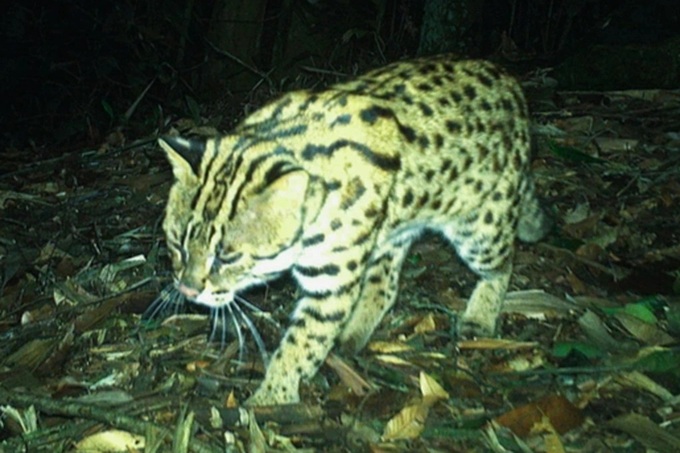According to Nguyen Van Sinh, director of Pu Hoat Nature Reserve, said that species recorded through camera traps include the muntjac, wild boar, short-tailed porcupine, rhesus macaque, serow, striped civet, and particularly the leopard cat which was found in the area for the first time.

The leopard cat which was found Pu Hoat Nature Reserve for the first time (Photo by Pu Hoat Nature Reserve)
These species are listed in the Vietnam Red Data Book and the International Union for Conservation of Nature (IUCN) Red List.
Sinh said that camera traps are not harmful to animals and widely used in biodiversity studies in Vietnam. This method is especially useful to detect rare species in remote and rugged areas that are difficult to observe directly.
Pu Hoat, recognised as a UNESCO world biosphere reserve in September 2007, spans 90,000 ha and boasts a high level of biodiversity. Over 1,240 species of plants and more than 790 species and subspecies of animals have been identified here.
The reserve is located near Pu Mat National Park and Pu Huong Nature Reserve in Nghe An and Xuan Lien Nature Reserve in Thanh Hoa Province.
Camera traps previously helped to capture evidence of lots of rare animal species in forests in the central provinces of Quang Tri and Ha Tinh.




















